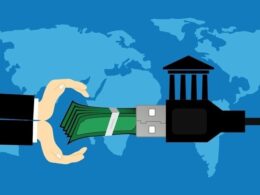Online payments are becoming increasingly popular because they are convenient and secure. Some banks also offer additional protections, such as chargeback. Chargeback is a mechanism that allows customers to get their money back in case of unauthorized transactions or defective goods. In order to obtain chargeback, you need to submit the appropriate application to the bank.
What exactly is chargeback? Definition of the term
Chargeback is nothing more than a reverse transfer of funds from a credit card to a customer’s bank account. It can be triggered by the customer or the bank. The most common reason for chargeback is an unauthorized transaction (such as a stolen card). Other reasons include failure to provide a service or product, improper performance of a service or product, or failure to deliver a product.
Chargeback is problematic for companies because it involves large administrative and operational costs. In addition, if a chargeback occurs, the company faces financial losses (the amount of the chargeback and interest). That is why it is so important to avoid situations in which chargebacks may occur. To do so, you should, among other things:
– make sure that all transactions are authorized;
– make sure that all products and services are performed correctly;
– make sure products are delivered on time;
– keep records (such as invoices) and document each transaction;
– check your accounts regularly, and transact only with trusted companies.
In conclusion, chargeback is a problematic issue that businesses must be aware of. To avoid chargeback, follow the rules listed above.
Conditions for taking advantage of chargeback?
Chargeback is a mechanism that allows bank customers to recover money in case of an unsatisfactory transaction. Unfortunately, not everyone can take advantage of this solution – there are certain conditions that must be met. First of all, chargeback can be applied only if a non-cash transaction was made – that is, one in which no cash means of payment were used.
In addition, in order to be eligible for chargeback, you must report to the bank within 60 days of the transaction. Importantly, in order to be entitled to chargeback, we must have evidence that we have made attempts to communicate with the company that made the transaction and that this company does not want to get back to us. As you can see, chargeback is not such a simple matter – but it can be very helpful in the case of problematic transactions.
Chargeback procedure – step by step
Anyone who runs an online business should be familiar with the chargeback procedure. This is a customer protection mechanism that allows customers to get their money back if they are dissatisfied with a good or service. Chargeback is a measure of last resort and is used only when other methods of resolving the problem (such as contacting customer service) have failed. The following is a detailed description of this procedure.
1. the customer submits a complaint to the bank
2. the bank investigates the case and, if it finds it justified, forwards it to the seller
3. the vendor has 14 days to respond
4. if the vendor does not respond in time or his response is not satisfactory, the bank may take further steps to refund the customer
5. the vendor has 7 days to provide additional information/documents
6. the bank re-examines the case and decides whether or not to refund the money
7. if the bank finds the complaint justified, it takes further steps to refund the customer
Remember that the chargeback procedure is a last resort and should only be used when other methods of resolving the problem have failed.




